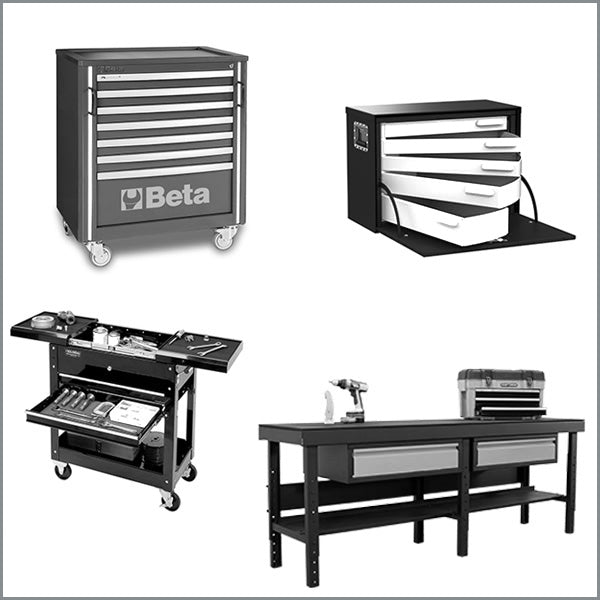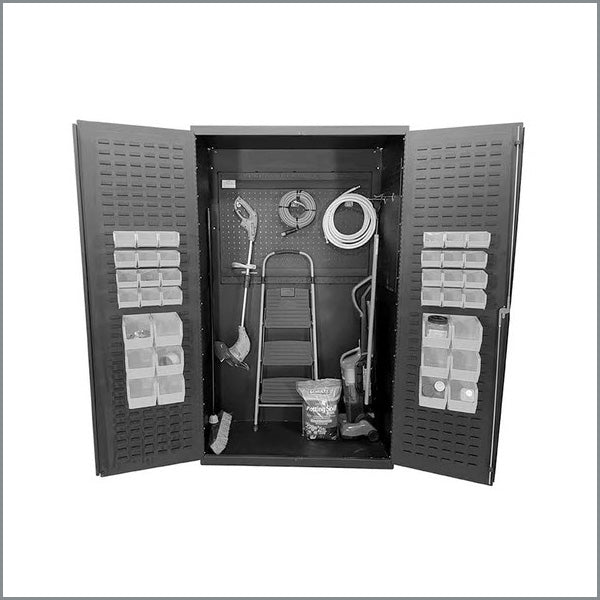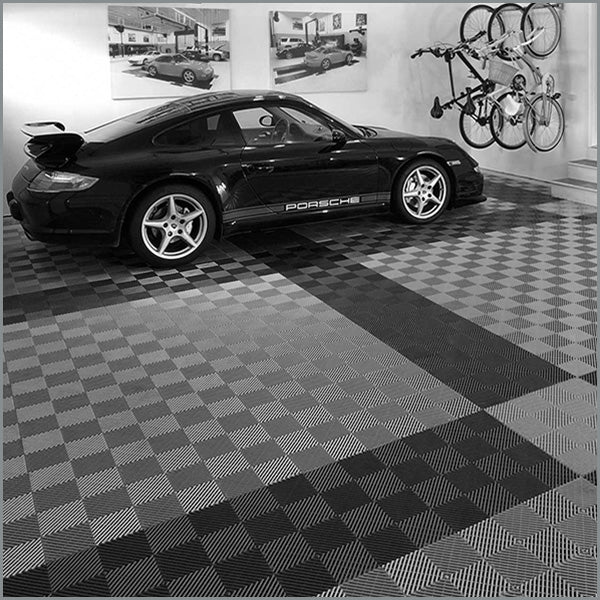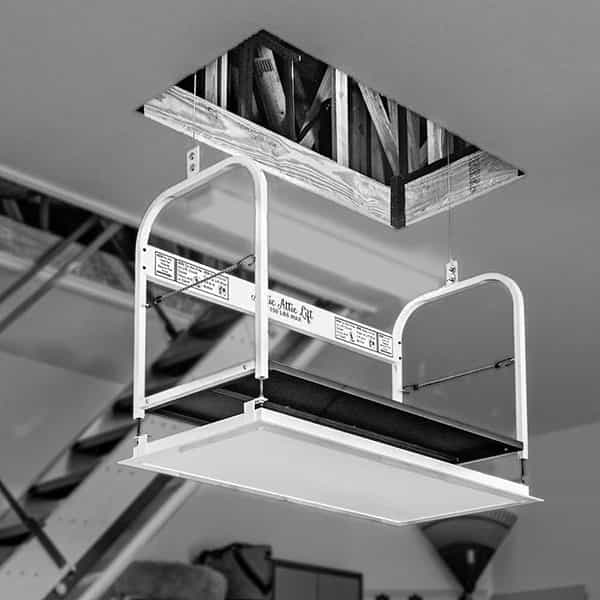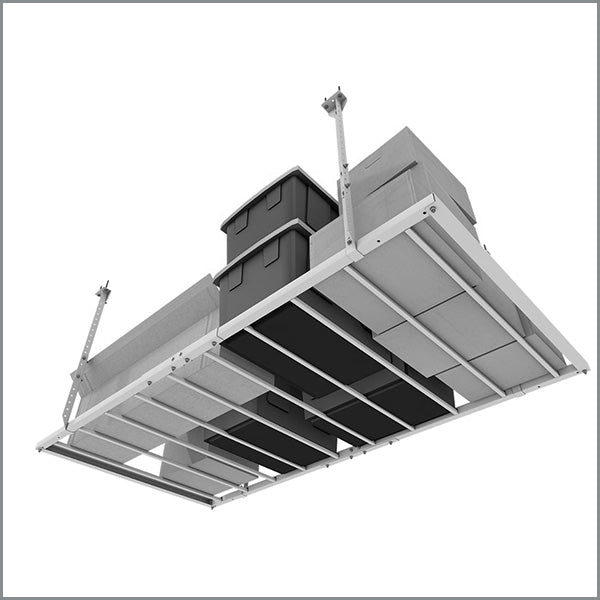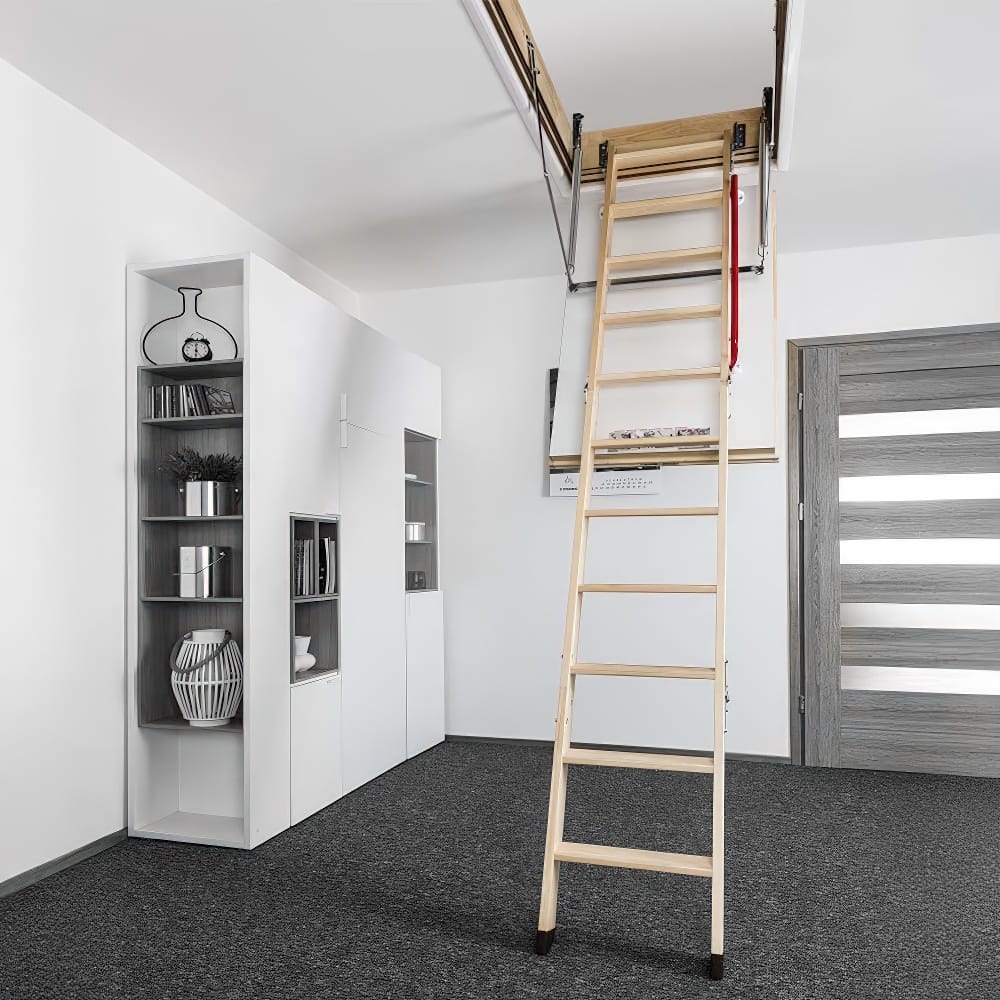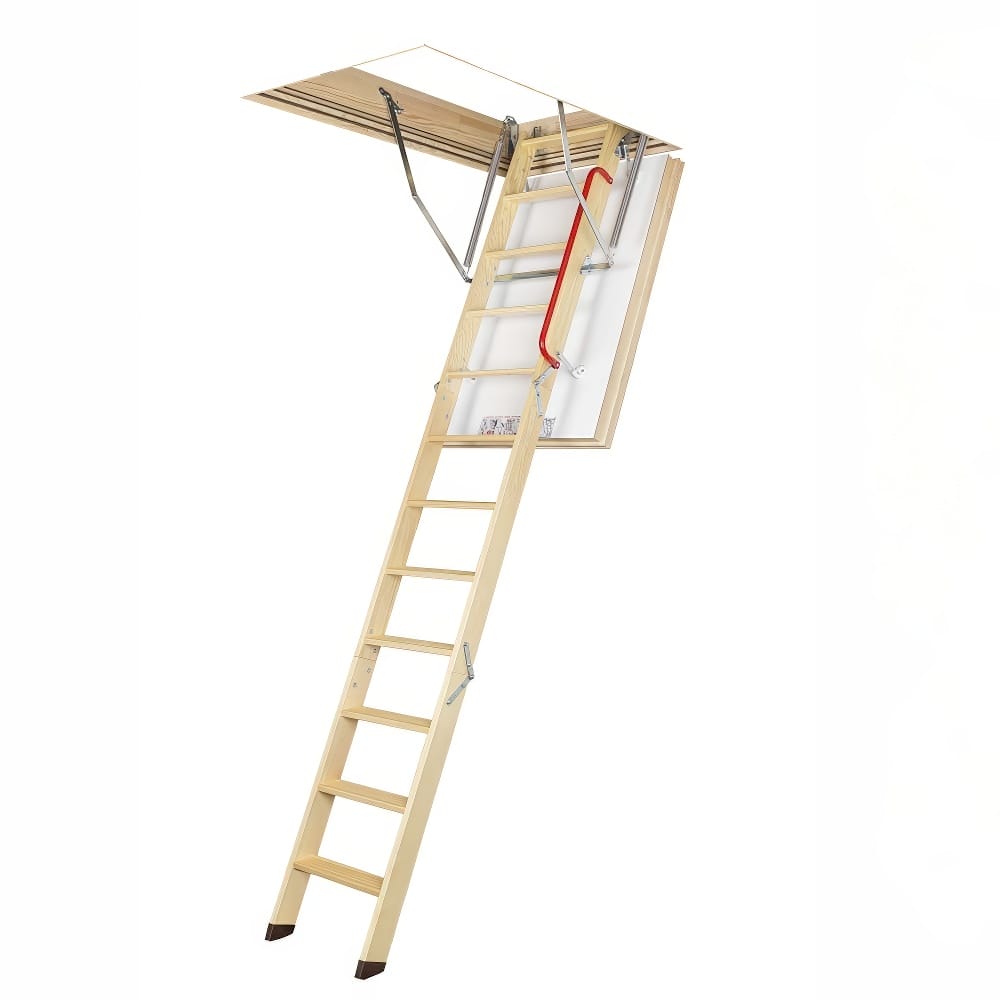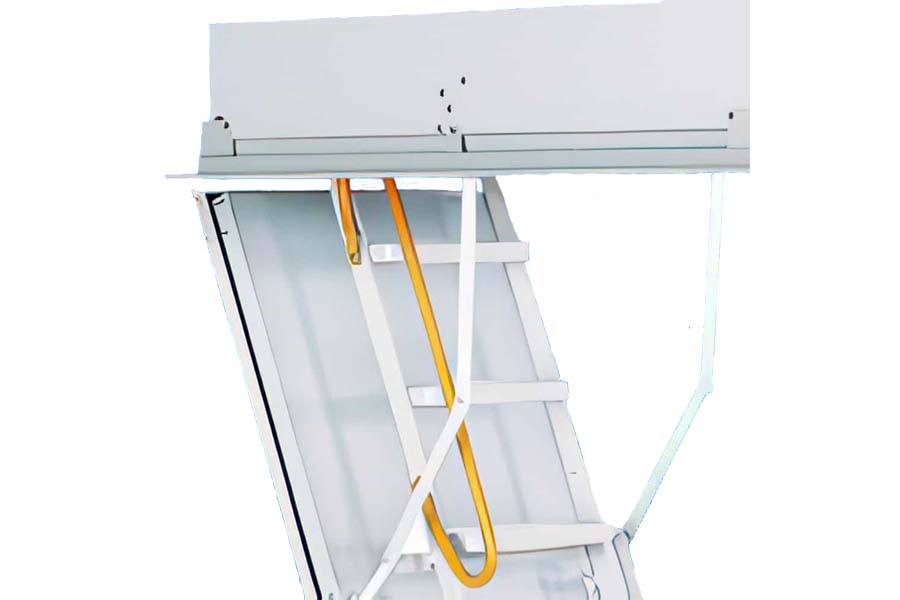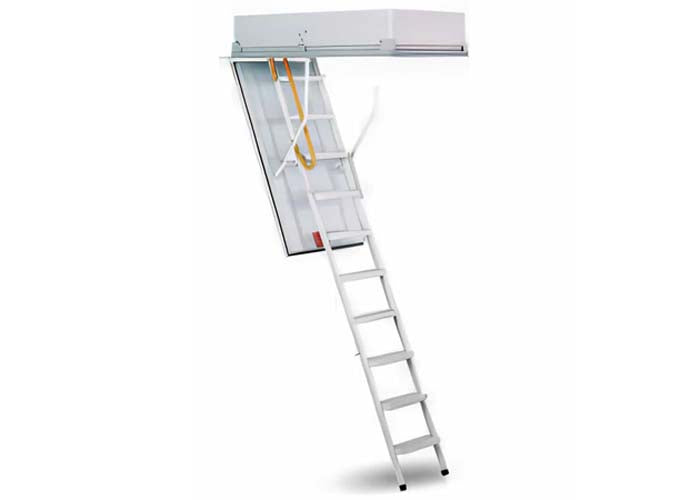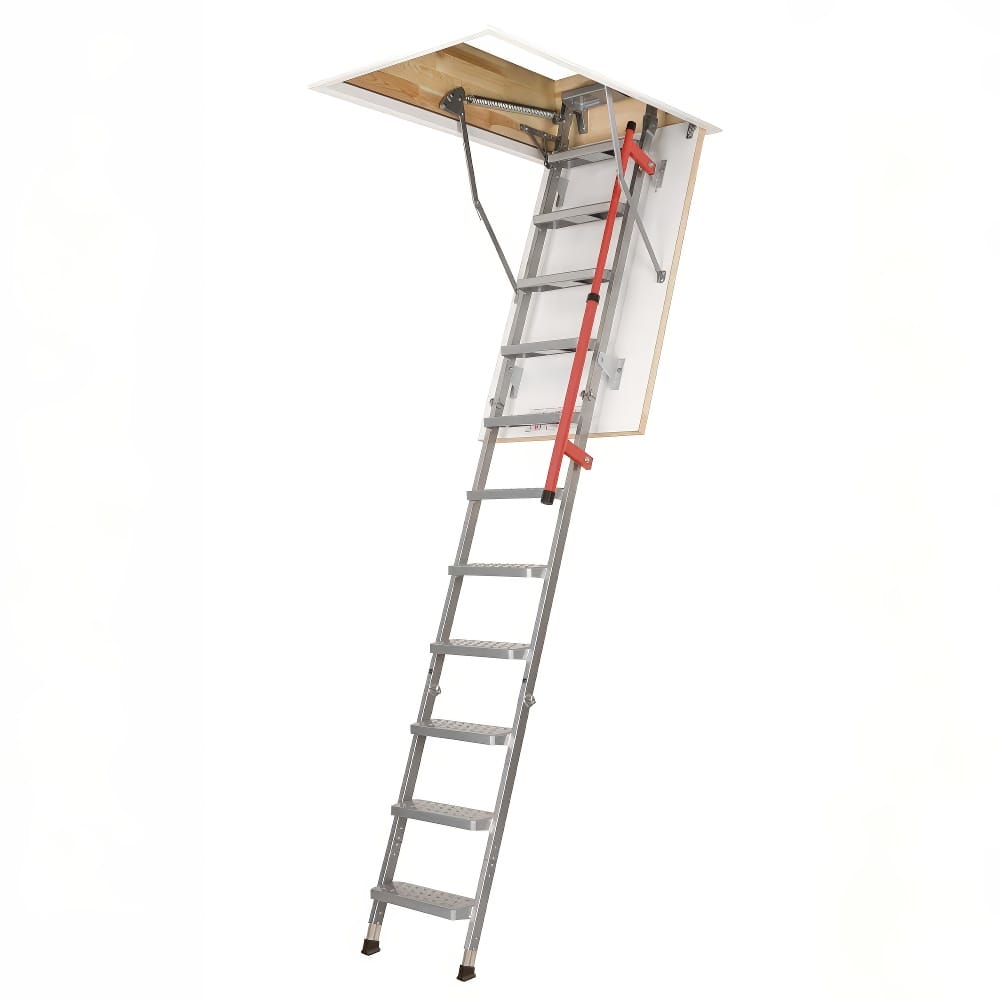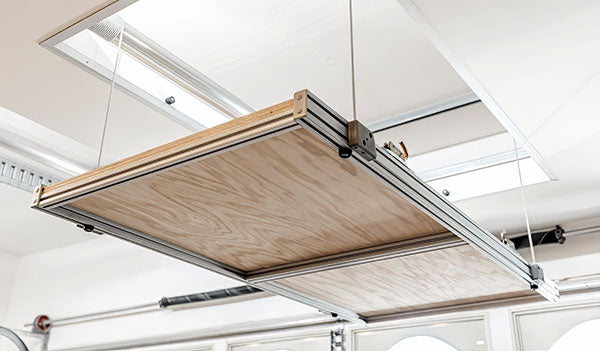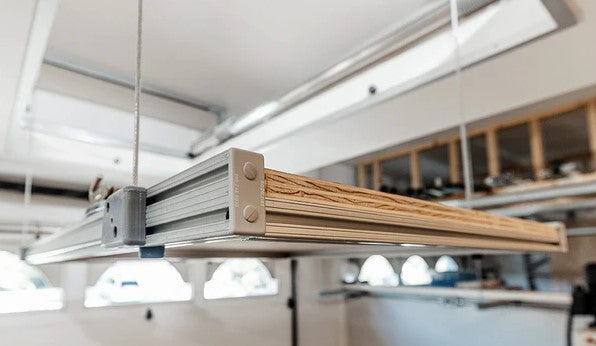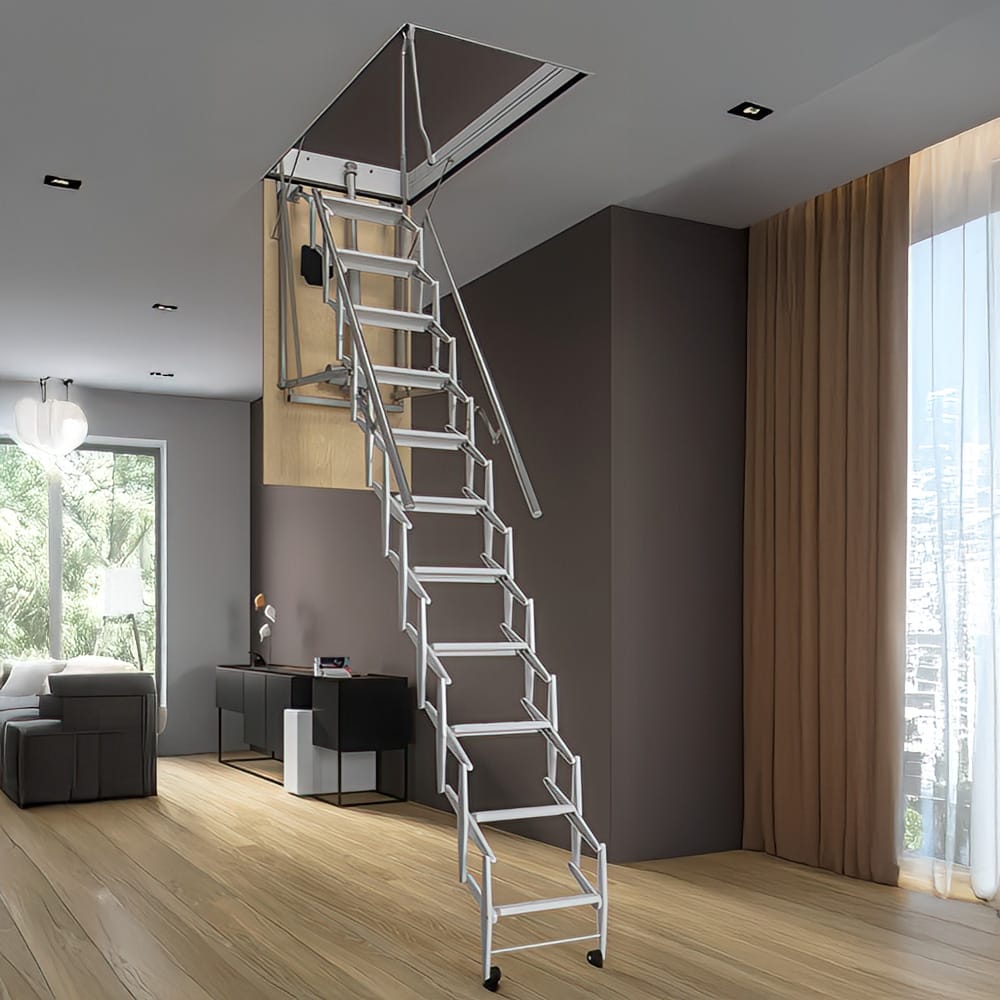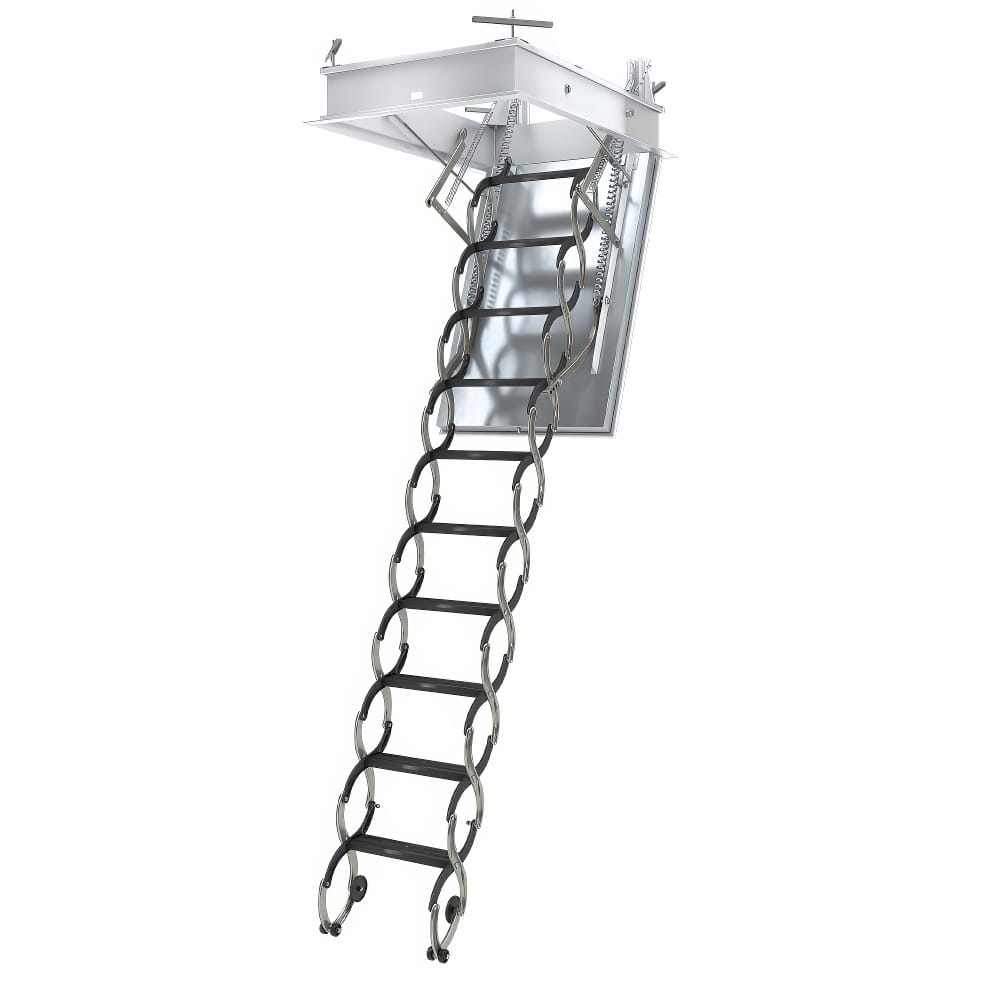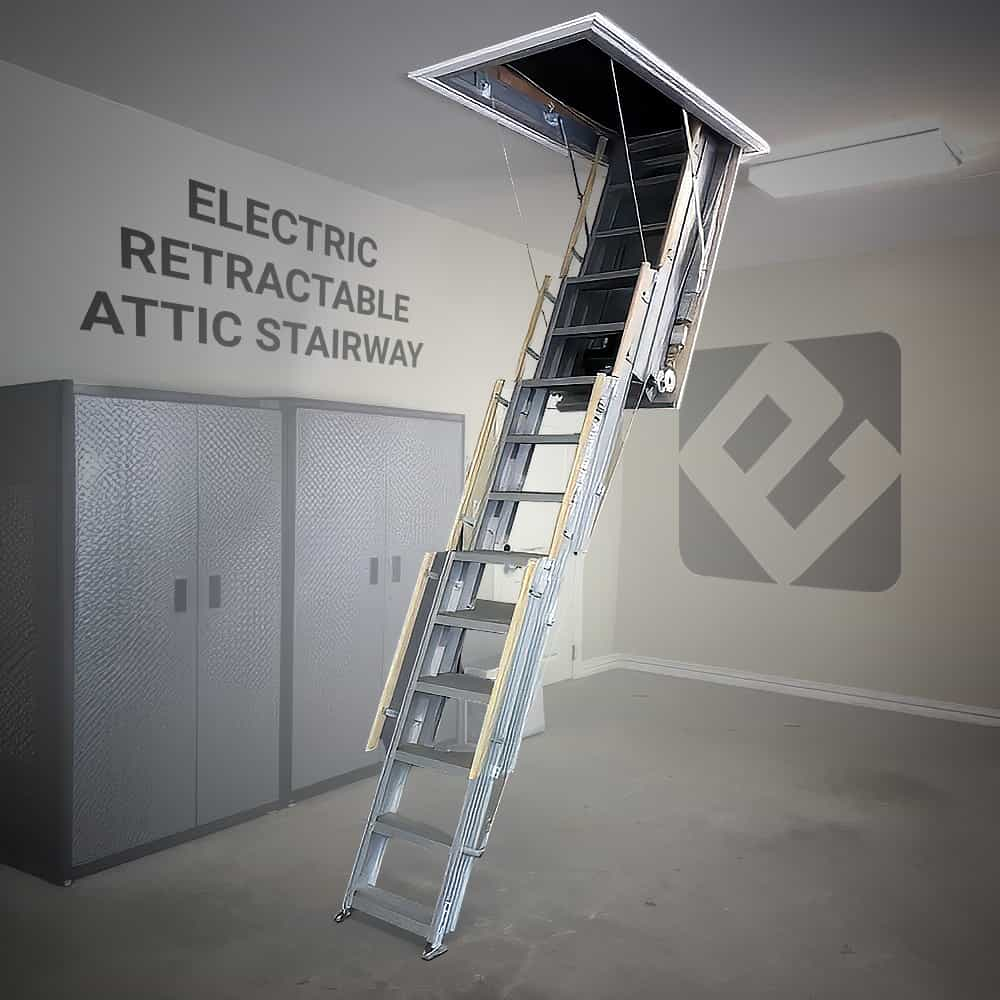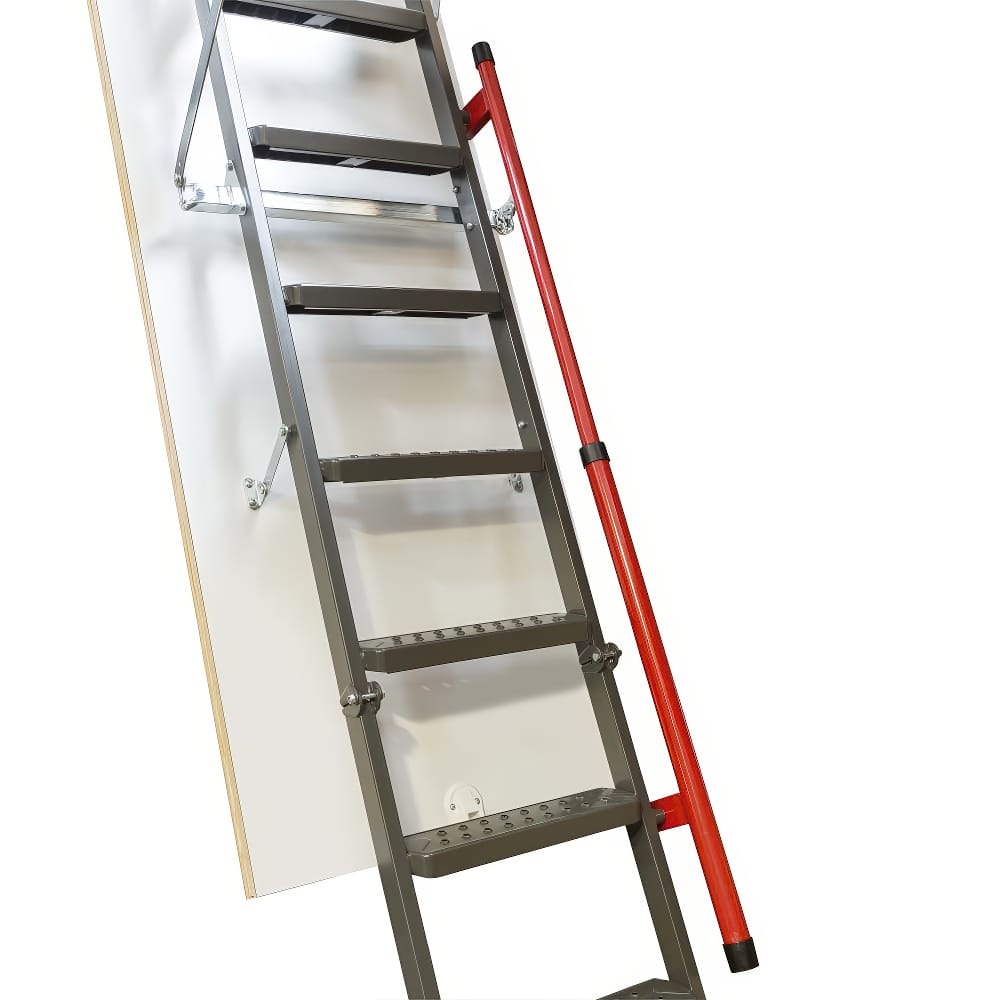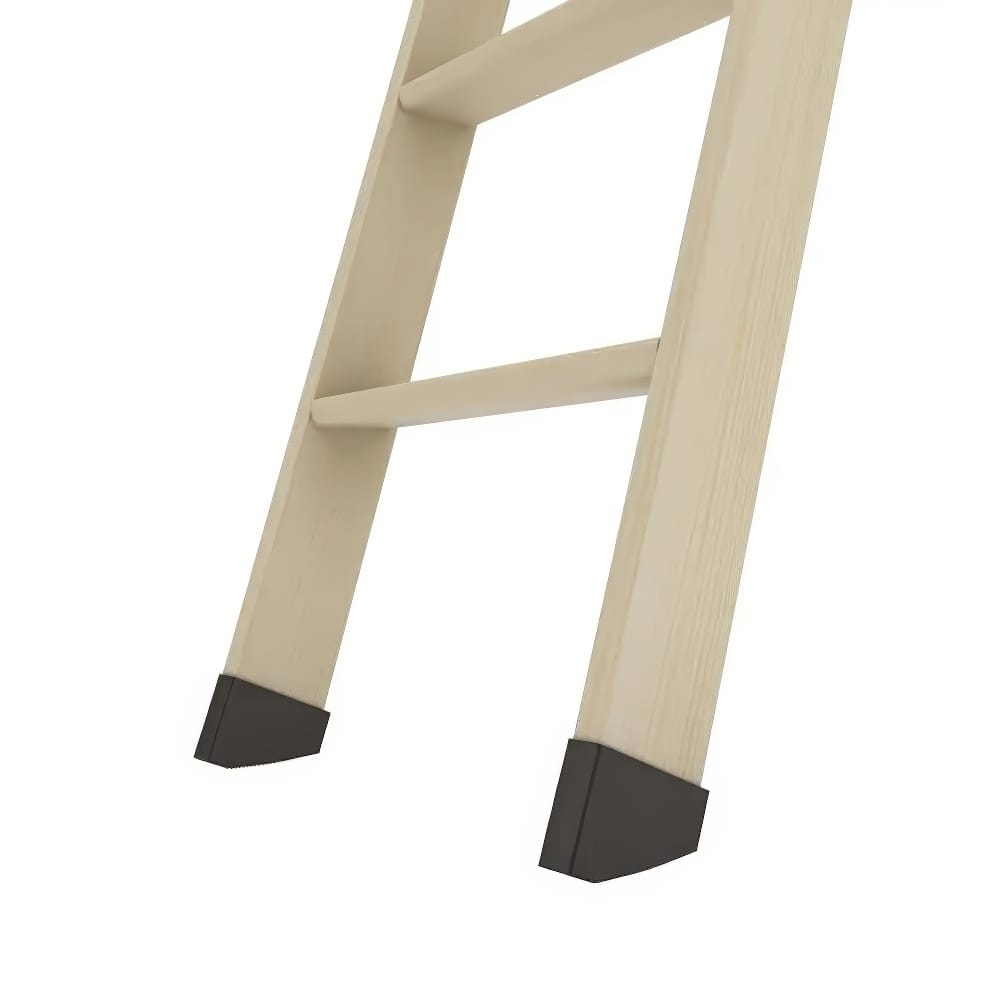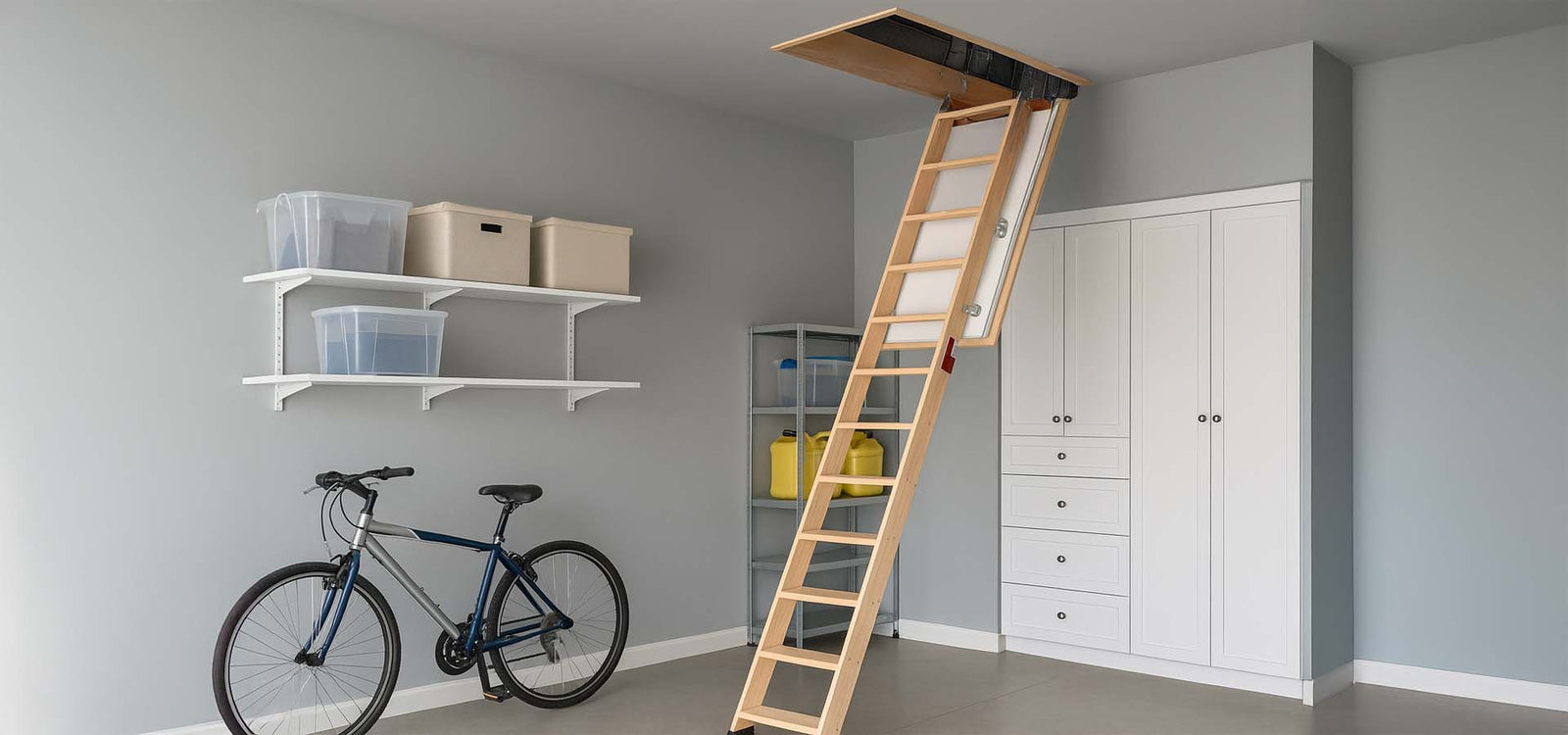Key Takeaways:
- Installing a new attic ladder between joists is certainly possible but requires some planning and possible structural modifications
- Standard ceiling joists are typically 16" or 24" apart, while most attic ladder openings require between 22.5" and 30.5" of width
- Cutting joists requires adding proper header joists for structural support
- Engineered truss attics should not be modified without professional evaluation
- Professional installation is recommended for fire-rated and insulated models like the FAKRO LWT Thermo
- Always consider weight capacity, ceiling height, and insulation needs when selecting an attic access solution
- Motorized solutions like attic lifts can be excellent alternatives when joist modification isn't feasible
IMPORTANT NOTE: Most of the recommendations in this article refer to “conventionally framed” attics. Truss roofs require special treatment.
Understanding Your Ceiling Structure for Attic Ladder Installation
When considering attic access, understanding your ceiling structure is crucial for a successful and safe installation. Most residential ceilings use joists spaced 16" or 24" on center. If you have 16" spacing, this will create a challenge since standard attic ladder openings require 22.5", 25.5, or 30.5" of width. This dimensional mismatch means you'll almost always need to cut through at least one joist to create a sufficient opening for your attic ladder, requiring careful planning and proper structural modifications to maintain your home's integrity.
Ceiling joists serve a critical structural purpose in your home's construction - they help maintain your home's structural integrity by tying walls together and supporting the ceiling below. These essential structural elements distribute weight evenly throughout your home and prevent walls from spreading apart over time. Cutting through them without proper reinforcement can seriously compromise your home's structure, potentially leading to sagging ceilings, wall movement, and even more serious structural issues down the line.
Proper attic storage solutions begin with safe access that maintains your home's structural integrity. Before starting any installation project for a new attic ladder, you'll need to assess your existing ceiling structure by thoroughly:
1. Identify the joist direction and spacing in your ceiling using a stud finder or by examining the attic space directly
2. Check for any electrical wiring, plumbing, or HVAC ducts in the installation area that might need to be rerouted
3. Determine if your ceiling joists are part of the roof truss system (which requires special consideration and often professional consultation)
4. Verify your ceiling height is compatible with your chosen ladder model to ensure proper extension and clearance
Remember that attic ladder safety starts with proper installation that respects your home's structural requirements. Improper modifications to your ceiling structure can lead to sagging ceilings, compromised roof support, and unsafe ladder use that puts you and your family at risk. Taking the time to understand your ceiling structure before beginning installation will save you from costly repairs and safety hazards in the future.
The Proper Method for Installing an Attic Ladder Between Joists
Installing an attic ladder between joists requires creating a properly framed opening that maintains structural integrity while providing sufficient space for your ladder system. This process involves more than simply cutting holes in your ceiling - it requires careful structural modification and reinforcement to ensure your home remains safe and structurally sound. Here's how to approach this project correctly with detailed steps and considerations:
Step 1: Create a Proper Header System
The key to safely installing an attic ladder between joists is creating a proper header system that redistributes the structural load. This critical framing technique ensures that the weight previously supported by the cut joists is properly transferred to the surrounding structure. This involves:
1. Identifying which joists need to be cut based on your ladder's required opening dimensions and your ceiling's joist layout
2. Installing temporary support beams during construction to maintain ceiling integrity while you work on the permanent framing
3. Adding double headers perpendicular to the joists you're cutting, using lumber of the same dimension as your existing joists for proper load transfer
4. Securing the headers to the uncut ceiling joists with heavy-duty joist hangers and structural screws or nails rated for framing
5. Adding trimmer joists to complete the framed opening and provide support for the ladder's frame on all sides
This comprehensive header system effectively transfers the load from the cut joists to the surrounding intact structure, maintaining the ceiling's structural integrity while creating the necessary opening for your attic ladder installation.
Quality attic ladders like those from FAKRO require proper installation to ensure safety and functionality over their lifetime. The FAKRO LML Insulated Metal Folding Attic Ladder, priced at $1,226.50, features exceptional insulation properties with a weather-tight seal and a sturdy metal construction that provides a maximum loading capacity of 350 lbs. This premium ladder represents a significant investment in your home's accessibility and energy efficiency, making it worth the additional effort to ensure proper installation with adequate structural support.
Step 2: Ensure Proper Dimensions
Most attic ladders require a specific rough opening size that must be precisely followed for proper installation and operation. Creating an opening with exact dimensions is essential for the ladder to fit properly, operate safely, and maintain any insulation or fire rating properties. For example:
Standard Rough Opening Sizes:
- FAKRO LWT Thermo Wood Attic Ladder: 22.5" × 47" or 30" × 57" (depending on model and ceiling height)
- FAKRO LML Insulated Metal Ladder: 23.5" × 47" to 27.5" × 51" (various sizes available for different installations)
- Rainbow ProTech Attic Ladder: 23.5" × 51.25" (with options for different ceiling heights)
Safe attic access depends on creating an opening that precisely matches your ladder's requirements to ensure proper operation and weight support. The exact dimensions will vary based on your specific ladder model and ceiling height, so always consult the manufacturer's installation instructions before cutting any openings. Remember the carpenter's rule: measure twice, cut once! Precise measurements will save you from costly mistakes and ensure your ladder fits perfectly in the framed opening.
Step 3: Professional Installation Considerations
For specialized models like the FAKRO LMF Fire-Rated Metal Attic Ladder ($1,545.00) or the FAKRO LSF Fire-Rated Scissor Metal Attic Ladder ($1,295.00), professional installation is highly recommended due to several critical factors that require specialized knowledge and experience:
1. Special fire-rating requirements that must be maintained throughout installation to preserve the ladder's fire-resistant properties
2. Precise alignment is needed for the proper operation of the complex mechanisms in these specialized ladder systems
3. Ensuring the fire-resistant seal remains intact around the entire perimeter of the installation
4. Proper integration with existing insulation and vapor barriers to maintain energy efficiency
Knowing when to replace your attic ladder is also important for maintaining safety in your home. Suppose you're replacing an existing ladder that's showing signs of wear, damage, or instability. In that case, this presents the perfect opportunity to ensure the opening is properly framed according to current building standards. Professional installers can evaluate your existing opening and make any necessary structural improvements to ensure your new ladder will be safely supported for years to come.
Best Attic Ladder Options for Installation Between Joists
When selecting an attic ladder for installation between joists, consider these top options available from Inventive Garage that offer different features, price points, and installation requirements to match your specific needs and home configuration:
1. FAKRO LWT Thermo Wood Attic Ladder
Priced at $655.00, the FAKRO LWT Thermo Wood Attic Ladder provides reliable attic access with a sturdy, well-balanced design that combines traditional wood construction with modern insulation technology. This ladder represents an excellent balance of quality, energy efficiency, and value for homeowners seeking a dependable attic access solution. Key features include:
- Highly insulated, energy-efficient design with an exceptional R-value to prevent heat loss through the attic opening
- Maximum loading capacity of 350 lbs, providing ample support for most users and light storage items
- Sturdy pine wood construction for safe and easy attic access with natural aesthetic appeal
- Excellent for climate control with its insulated hatch that includes a rubber gasket seal to prevent drafts
- Available in multiple sizes to accommodate different ceiling heights from 7' 5" to 10' 1"
This model requires a rough opening of 22.5" × 47" or 30" × 57", depending on the specific model chosen, meaning you'll need to carefully plan and execute cutting and framing between joists for proper installation. The insulation properties make this an excellent choice for homes in variable climate regions where energy efficiency is a priority.
2. Rainbow ProTech Attic Ladder
The Rainbow ProTech Attic Ladder, priced at $1,525.00, offers a secure fire-rated attic door with premium construction and safety features that make it ideal for installations where fire safety is a priority. This professional-grade ladder combines durability with advanced safety features for discerning homeowners. Key features include:
- Robust 350 lb. weight capacity that safely accommodates users of various sizes and allows for carrying items to and from the attic
- 30-minute fire rating for added safety, making it ideal for installations between living spaces or in attached garages
- Accommodates ceiling heights from 8' to 10', with adjustable settings for precise installation
- Sturdy construction with premium materials for reliable performance and longevity
- Steel door design that provides additional security and fire protection compared to standard wood models
This model is ideal for homes where fire safety is a priority, such as attached garages or multi-story buildings where building codes may require fire-rated access points between floors. The higher price point reflects the advanced safety features and premium construction quality that provide peace of mind, along with convenient attic access.
3. FAKRO LML Insulated Metal Folding Attic Ladder
The FAKRO LML Insulated Metal Folding Attic Ladder ($1,225.00) combines durability with energy efficiency in a premium metal construction that offers excellent thermal performance. This high-end ladder is designed for homeowners who want the best in both durability and energy conservation with these outstanding features:
- Exceptional insulation with a weather seal gasket that prevents heat loss and reduces energy costs year-round
- Sturdy metal construction that resists warping, cracking, and other issues common to wood ladders over time
- Maximum loading capacity of 350 lbs, providing safe access for most users with ample strength in reserve
- Suitable for homes in variable climate regions where temperature fluctuations make insulation particularly important
- Sleek, modern appearance with a white finish that blends seamlessly with most ceiling designs
Explore different attic storage types to determine which ladder best suits your needs before installation. Consider factors like frequency of use, items you'll be storing, ceiling height, and climate conditions when selecting the ideal ladder for your specific situation. The right ladder should balance your budget considerations with safety features, insulation needs, and long-term durability.
Alternative Solutions: Attic Lifts for Difficult Joist Configurations
In some cases, modifying joists may not be feasible or desirable due to structural concerns, historical preservation requirements, or complex ceiling configurations. Attic lifts provide an excellent alternative that can often work with existing joist configurations while offering unique advantages for moving items between floors without the need for climbing ladders.
Auxx-Lift Garage Attic Lift
The Auxx-Lift Garage Attic Lift ($2,595.00) offers a compelling alternative to traditional ladders for homeowners who prioritize convenience and safety when accessing attic storage. This innovative system eliminates the need to climb ladders while carrying bulky or heavy items, reducing the risk of falls and injuries. Key features include:
- Impressive capacity to carry up to 400 pounds to your attic, exceeding the weight capacity of most attic ladders
- Convenient wireless remote control operation that allows you to safely operate the lift from floor level
- Flexible installation options that can work with standard 24" on-center joists without major structural modifications
- Eliminates the need for climbing ladders with heavy items, making attic storage accessible for users of all ages and abilities
- Compact design that requires minimal floor space in both the garage and attic areas
This system is particularly useful for garage storage applications, allowing you to safely lift seasonal items, holiday decorations, and other bulky objects without navigating a ladder while carrying awkward loads. The Auxx-Lift can often be installed without extensive joist modifications, making it an excellent option when structural changes are problematic or prohibited.
Majic Attic Lift System
The Majic Attic Lift System ($2,975.00) transforms how you access attic or garage storage with its premium construction and advanced features. This high-end lift system offers exceptional convenience and reliability for homeowners who want the ultimate in attic accessibility:
- Sophisticated motorized lift with push-button operation that makes attic access effortless and convenient
- Safe and secure lifting mechanism with multiple safety features to prevent accidents during operation
- Versatile installation options that can work with existing joist configurations in many homes
- Perfect for storing seasonal items, sporting equipment, and bulky storage containers without the hazards of ladder transport
- Professional-grade construction designed for years of reliable service (5-year bumper-to-bumper warranty)
Motorized storage solutions like these are becoming increasingly popular for their convenience and safety benefits, especially in households with elderly members or those with mobility limitations. These systems also protect your valuable items from damage that might occur when carrying them up and down traditional ladders.
Rainbow Galaxy II Electric Attic Stairway
For a premium solution that combines the best of both worlds, the Rainbow Galaxy II Electric Attic Stairway ($3,495.00) offers ladder functionality with motorized convenience. This top-of-the-line system provides the ultimate in attic accessibility with these impressive features:
- Convenient remote control operation that allows you to deploy and retract the ladder without manual effort
- Space-efficient design that requires no additional attic space beyond the ladder opening itself
- Substantial 350 lb weight capacity that safely accommodates most users and allows for carrying items
- Versatile adjustable height from 7'6" to 10' to fit various ceiling configurations
- Premium construction with safety features that exceed industry standards
This option provides the benefits of both a traditional ladder and a motorized system while requiring a properly framed opening between joists. The Rainbow Galaxy II represents the pinnacle of attic access technology, offering unmatched convenience and safety for homeowners who want the very best in accessibility solutions.
Structural Considerations When Cutting Joists
When installing an attic ladder between joists, understanding the structural implications is crucial for maintaining your home's integrity and ensuring the safety of your family. Modifying structural elements requires careful consideration of engineering principles and building code requirements to prevent potentially dangerous situations.
Load-Bearing vs. Non-Load-Bearing Joists
Not all ceiling joists serve the same structural purpose in your home, and understanding the difference is essential before making any modifications. The structural role of joists varies depending on your home's design and construction method:
1. Load-bearing joists: These critical structural members support the weight of the floor above or roof structure, transferring loads to the foundation. Modifying these requires extensive reinforcement and often professional engineering guidance.
2. Non-load-bearing joists: These primarily support the ceiling material below and provide lateral stability to the structure. While still important, modifications to these joists typically require less extensive reinforcement.
Before cutting any joists, it's essential to determine which type you're dealing with by examining your home's construction plans, consulting with a structural engineer, or having a professional contractor assess your ceiling structure. For load-bearing joists, additional reinforcement will be necessary, potentially requiring consultation with a structural engineer to ensure proper load transfer and structural integrity.
Proper Header Installation
When cutting joists to create an opening for your attic ladder, you must install headers to transfer the load to adjacent uncut joists. This critical step ensures that the structural integrity of your ceiling remains intact despite the modification. Key considerations for proper header installation include:
- Headers should be the same dimension as your existing joists to maintain consistent load-bearing capacity (typically 2×8, 2×10, or 2×12 lumber)
- Double headers provide better structural support and are recommended for most installations, especially for larger openings
- Use proper joist hangers and structural screws/nails rated specifically for framing applications to ensure secure connections
- Ensure tight, secure connections at all points where new framing members meet existing structure
- Consider using metal reinforcement plates at critical junctions for additional strength
Warning:
Never cut engineered roof trusses without consulting a structural engineer. Trusses are designed as a complete system with each component serving a specific purpose, and modifications can compromise your entire roof structure, potentially leading to catastrophic failure under load conditions like heavy snow or high winds.
Maximizing your attic storage space should never come at the expense of structural integrity. When in doubt about any structural modifications, always consult with a licensed professional. The cost of professional consultation is minimal compared to the potential expense of repairing structural damage or addressing safety hazards that could result from improper modifications to your home's structural elements.
Special Installation Considerations for Different Ladder Types
Different attic ladder types have specific installation requirements when working between joists, and understanding these unique considerations will help ensure a successful installation that maintains both safety and functionality. Each ladder style presents its own challenges and benefits when installed between ceiling joists.
Folding Wood Ladders
Folding wood ladders like the FAKRO LWT Thermo ($655.00) are among the most popular attic access options, but they require careful installation considerations to ensure proper operation and safety. These traditional ladder systems have specific requirements that must be addressed during installation:
- Precise rough opening dimensions are critical - even small deviations can prevent proper operation or create gaps that affect insulation
- Sufficient clearance for the ladder to swing down and extend fully without obstruction from walls, furniture, or fixtures
- Proper support for the ladder frame around the entire perimeter to distribute weight evenly during use
- Consideration of ceiling thickness for proper installation of the frame and hinge mechanisms
- Accurate positioning of the opening to ensure the ladder extends in the desired direction and location
Metal Scissor Ladders
The FAKRO LSF Fire-Rated Scissor Metal Attic Ladder ($1,295.00) and similar scissor-style ladders have unique requirements that differ from traditional folding models. These specialized ladders offer space-saving benefits but require particular attention during installation:
- Needs less clearance below for extension, making them ideal for hallways and smaller spaces
- Requires exceptionally solid anchoring to support the scissor mechanism and prevent lateral movement during use
- Must maintain fire rating integrity during installation, which often means precise fitting and sealing around the frame
- May require special framing techniques to accommodate the unique mounting hardware and operational mechanisms
- Often heavier than wood models, necessitating stronger framing support throughout the opening
Electric Attic Ladders
The eLAIR One-Touch Stairway ($4,435.00) and similar motorized models represent the cutting edge of attic access technology, but they come with their own set of installation requirements that must be carefully addressed:
- Electrical connections (usually 110V) must be properly installed according to local electrical codes, often requiring a licensed electrician
- Reinforced framing to support the additional weight of the motor mechanism and provide stable operation over time
- Precise alignment for proper operation of the motorized components to ensure smooth deployment and retraction
- Additional clearance considerations for the motorized components, control boxes, and safety mechanisms
- Specific mounting requirements for the motor and control systems that may affect framing design
These specialized ladders offer significant benefits in terms of convenience and accessibility, but they require careful planning during the installation between joists to ensure both proper operation and structural integrity. Professional installation is strongly recommended for electric models to ensure safety and compliance with building and electrical codes.
DIY vs. Professional Installation: Making the Right Choice
When installing an attic ladder between joists, deciding between DIY and professional installation is an important consideration that affects safety, functionality, and long-term satisfaction with your attic access solution. This decision should be based on your skills, the complexity of the installation, and the specific ladder model you've selected.
When to DIY
You might consider DIY installation if you have the necessary skills and experience to handle structural modifications safely. This approach can save on labor costs but requires careful planning and execution. DIY installation might be appropriate when:
- You have some carpentry experience with specific knowledge of structural framing techniques
- You understand structural framing principles, including load paths, header systems, and proper fastening methods
- You're comfortable working with power tools, including circular saws, drills, and impact drivers
- You're installing a basic wood ladder model with straightforward mounting requirements
- You have at least one helper for the installation process, as attic ladders are typically too heavy and awkward to install alone
- You have access to the proper tools, including a reciprocating saw, framing square, level, and structural fasteners
Basic models like some wood ladders may be suitable for experienced DIYers with proper preparation and research, but remember that proper framing is crucial regardless of the ladder type. Even seemingly simple installations require careful attention to structural details to ensure safety and code compliance.
When to Hire a Professional
Professional installation is recommended in many situations, particularly when dealing with complex ladder systems or significant structural modifications. The expertise of a professional installer can prevent costly mistakes and ensure long-term safety. Consider professional installation when:
- You're installing a fire-rated model like the Rainbow ProTech ($1,525.00) that requires specific techniques to maintain its fire rating
- You're installing an electric model like the Rainbow Galaxy II ($3,495.00) that involves both structural and electrical work
- You're unsure about the structural implications of cutting joists in your specific ceiling configuration
- You need to modify engineered trusses, which should ALWAYS be done under professional guidance
- Your local building codes require permits and inspections for structural modifications
The additional cost of professional installation may pay for itself in peace of mind, proper functionality, and the avoidance of potentially costly mistakes or safety hazards. Professional installers bring specialized knowledge and experience that ensures your attic ladder will operate safely and efficiently for years to come.
Installation Cost Considerations
When budgeting for your attic ladder project, it's important to consider all potential costs beyond just the ladder itself. A comprehensive budget should include:
- Ladder cost (ranging from $655.00 for the FAKRO LWT to $3,495.00 for the Rainbow Galaxy II)
- Framing materials (approximately $50-$150 depending on your existing structure and the size of the opening)
- Tools needed (if DIY), which may include specialized items like joist hangers, structural screws, and framing squares
- Professional installation (typically $500-$900 depending on complexity, location, and the specific ladder model)
- Potential electrical work for powered models, which may require a licensed electrician at additional cost
- Permits and inspections, if required by local building codes
- Additional materials like insulation, weatherstripping, or trim to complete the finished appearance
Overhead storage solutions like attic ladders are an investment in your home's functionality and should be approached with appropriate planning and resources. While it may be tempting to cut corners to save money, compromising on quality or proper installation can lead to safety hazards and additional expenses down the road.
Insulation and Energy Efficiency Considerations
Installing an attic ladder between joists creates a potential thermal bridge in your ceiling, making insulation considerations particularly important for maintaining your home's energy efficiency. Proper attention to insulation details can prevent heat loss in winter and heat gain in summer, helping to control energy costs and maintain comfortable indoor temperatures year-round.
Insulated Attic Ladder Options
For optimal energy efficiency, consider these specially designed insulated options that minimize heat transfer through the attic access point:
1. FAKRO LWT Thermo Wood Attic Ladder ($655.00)
- Features built-in insulation with an impressive R-value that significantly reduces heat transfer
- Includes a weather-tight rubber gasket seal that prevents air leakage around the perimeter
- Helps maintain home temperature regulation by creating a thermal barrier between living space and attic
- White hatch cover blends seamlessly with most ceiling finishes while providing insulation benefits
2. FAKRO LML Insulated Metal Folding Attic Ladder ($1,225.00)
- Exceptional insulation properties with multi-layer construction for superior thermal performance
- Weather seal gasket for improved energy efficiency and draft prevention
- Metal construction for durability and fire resistance without compromising on insulation
- Designed specifically for climate-controlled spaces where energy efficiency is a priority
Sealing and Weatherstripping
Even with insulated models, proper sealing is essential to prevent air leakage and maintain energy efficiency. These additional measures can significantly improve the thermal performance of your attic access:
- Apply high-quality weatherstripping around the hatch perimeter to create an airtight seal when closed
- Ensure the ladder closes tightly against the seals by adjusting hinges and latches for proper alignment
- Consider adding an attic tent or cover for additional insulation, especially in extremely cold or hot climates
- Check for air leaks after installation using an infrared thermometer or professional energy audit and seal as necessary
- Add insulation to the back of the hatch door itself if not already included in your ladder model
Proper attic organization combined with an insulated ladder installation helps maximize your home's energy efficiency while providing convenient storage access. By addressing insulation concerns during installation, you can prevent the attic access from becoming a significant source of energy loss in your home, potentially saving hundreds of dollars in heating and cooling costs over the life of the ladder.
Safety Features to Look for in Attic Ladders
When installing an attic ladder between joists, prioritizing safety features ensures long-term satisfaction and security for everyone in your household. The right safety features not only prevent accidents but also make the ladder more comfortable and convenient to use on a regular basis, especially when carrying items to and from the attic.


